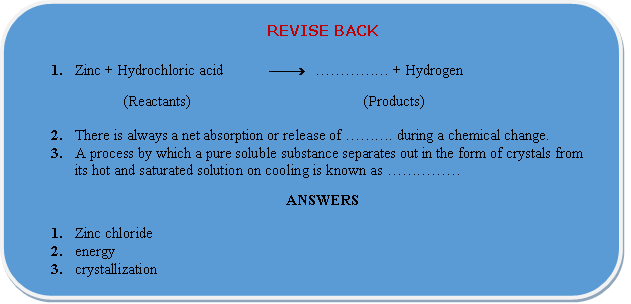
Crystallisation
Physical and chemical change of Class 7
Process of Crystallisation
Crystallization is a process by which a pure soluble substance separates out in the form of crystals from its hot and saturated solution on cooling.
The process is employed in the separation of pure common salt from the impure common salt obtained from sea. Similarly, it is used to obtain pure nitre from impure nitre (KNO 3 ) pure copper sulphate (CuSO 4 ), from its impure sample and pure alum (phitkari) from the impure alum.
(i) Separation of pure copper sulphate from impure sample:
10 g of impure sample of copper sulphate, containing sand particles or dirt particles an impurity is taken in a beaker. This sample is dissolved in minimum amount of water. The impurities are filtered and the clear copper sulphate solution is collected in a china dish. The china dish containing copper sulphate solution is placed over sand bath.
When sand is heated in an iron vessel by placing it over a tripod stand, this arrangement is called sand bath.
The solution is allowed to evaporate, so that more than half of the volume of water evaporates. The solution is now saturated at higher temperature. The china dish is removed from the sand bath and covered with filter paper. The copper sulphate solution in it is allowed to cool for 24 hours. After 24 hours blue crystals of copper sulphate are separated out. The crystals are filtered and dried in the folds of filter paper.

Also Check









